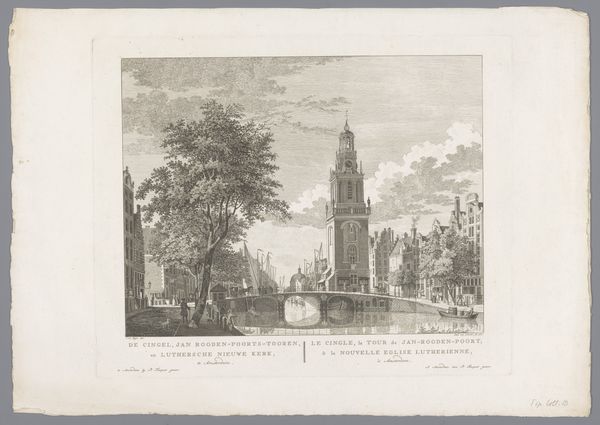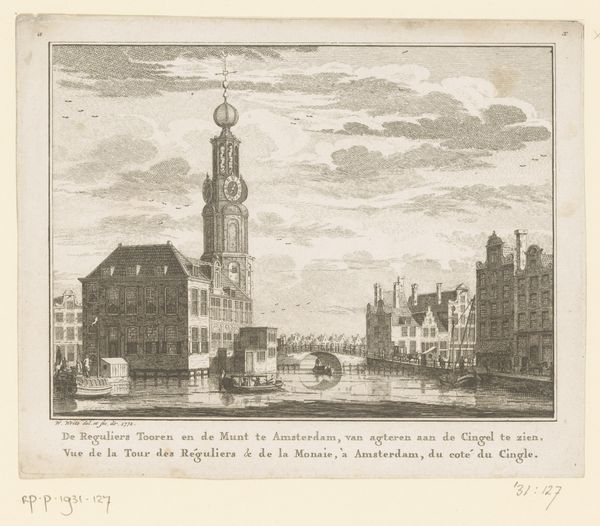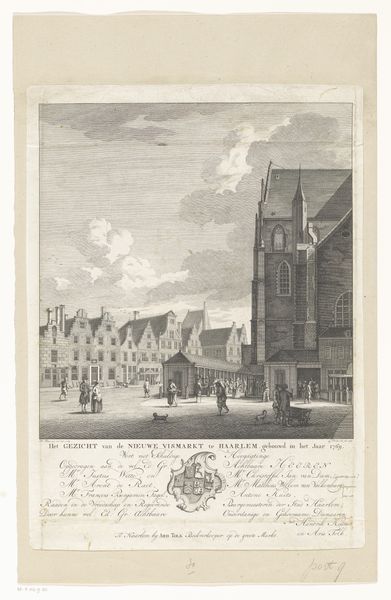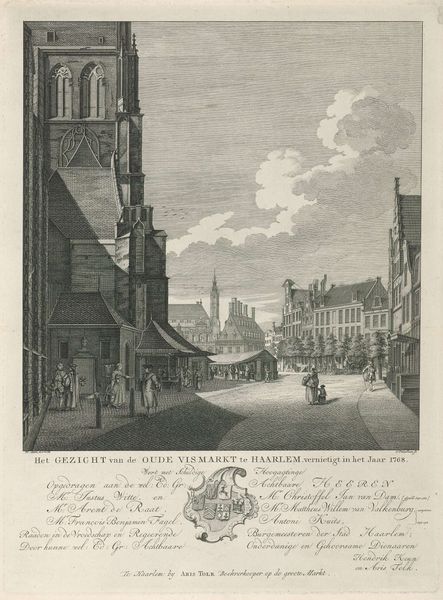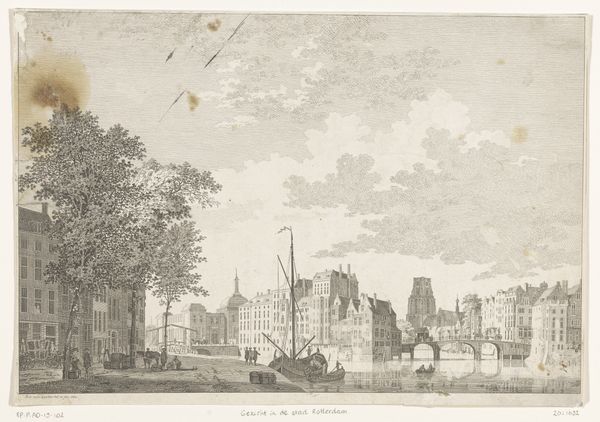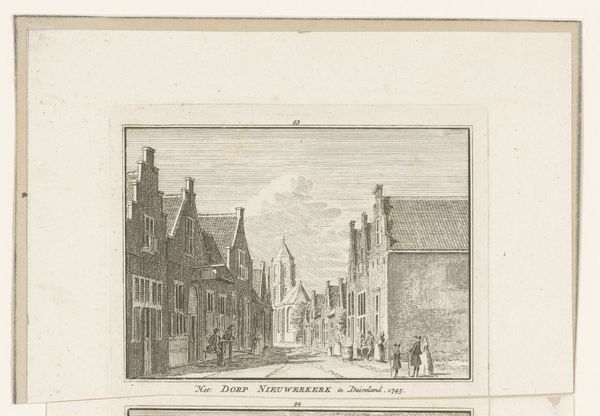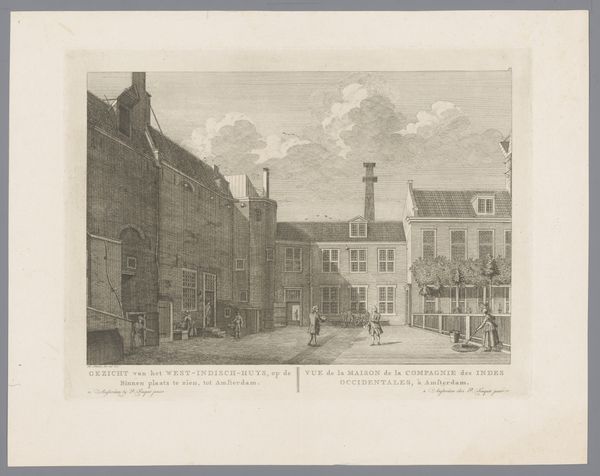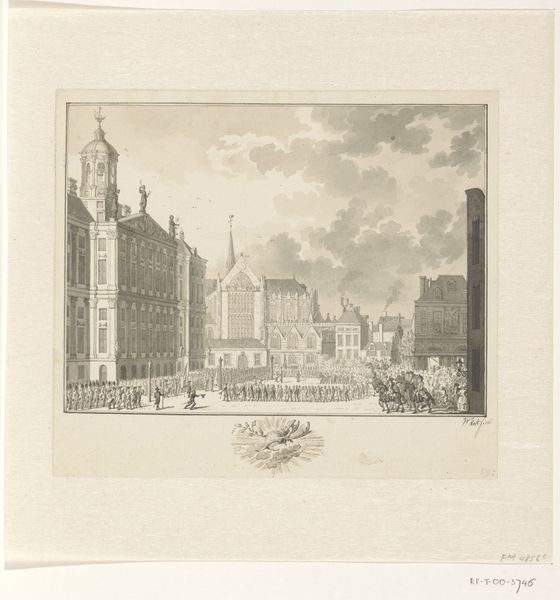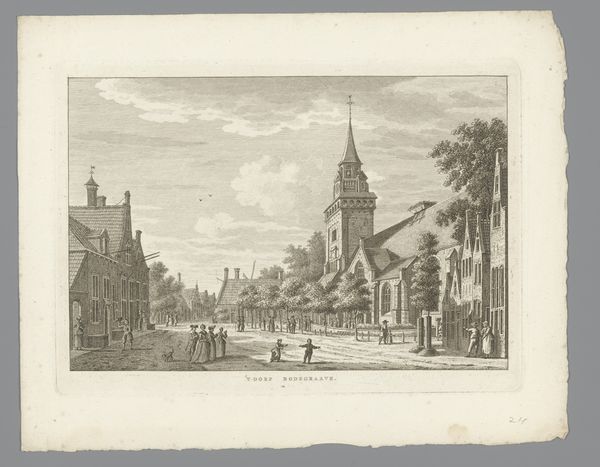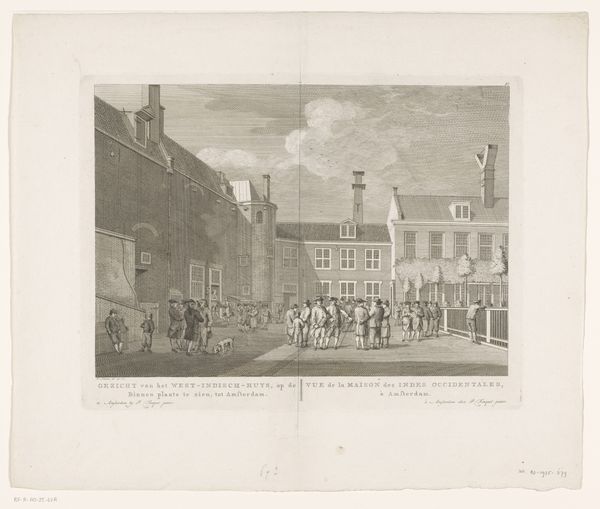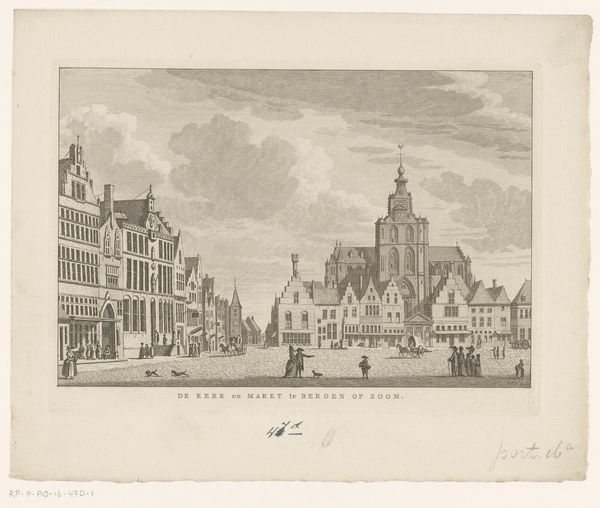
print, etching, engraving
#
neoclacissism
# print
#
etching
#
old engraving style
#
landscape
#
cityscape
#
engraving
Dimensions: height 166 mm, width 201 mm
Copyright: Rijks Museum: Open Domain
Curator: This etching from 1804 by Willem Writs offers a glimpse of the Jan Roodenpoortstoren in Amsterdam, observed from the Oude Lelystraat. The piece, created using etching and engraving, resides within the Rijksmuseum's collection. What strikes you first about it? Editor: There's a quiet stillness despite the implied hustle and bustle of a city scene. It's rendered in shades of grey, lending it a solemn, almost melancholic mood, even though it's a simple street view. Curator: I agree, the neoclassical style lends itself to that reserved feel. Cityscapes like this became quite popular as displays of civic pride and advancements in urban life. Note the precise lines and almost architectural rendering of the tower and surrounding buildings. Editor: Yet, looking at the people – small figures frozen in time, arranged in what looks like a somewhat stagey composition—I wonder who benefitted from this 'urban life'. Were marginalized communities included in this vision of progress, or were they further excluded? I’m thinking about issues of class and access. Curator: An astute observation. It's essential to consider the socio-political context. Etchings like these were often commissioned or purchased by the wealthy. They represented a particular viewpoint, that of the ruling class showcasing their domain and its supposed order. It does highlight an ordered Amsterdam, reinforcing that idea of control and power through imagery. Editor: Precisely. Even the choice to highlight this specific tower could be loaded with symbolic meaning tied to power structures and maybe even religious authority at the time. Who was able to even afford this print to be reminded of their place within the hierarchy? Curator: It's important to understand that visual representation has never been neutral, particularly in a historical context. These cityscapes contributed to the construction of a national and civic identity, selectively displaying aspects deemed 'worthy' of portrayal, and perhaps, inadvertently, concealing others. Editor: Yes, thinking about this imagery today urges a broader investigation beyond aesthetics, requiring engagement with questions of power, social equity, and the politics of seeing. Curator: Well, thinking about it, reflecting on the image in this new way prompts us to seek a more nuanced understanding of not only the artwork itself, but also the culture it helped shape. Editor: Indeed. It's about unpacking those hidden layers and broadening the narrative through various perspectives and critical interpretations.
Comments
No comments
Be the first to comment and join the conversation on the ultimate creative platform.
